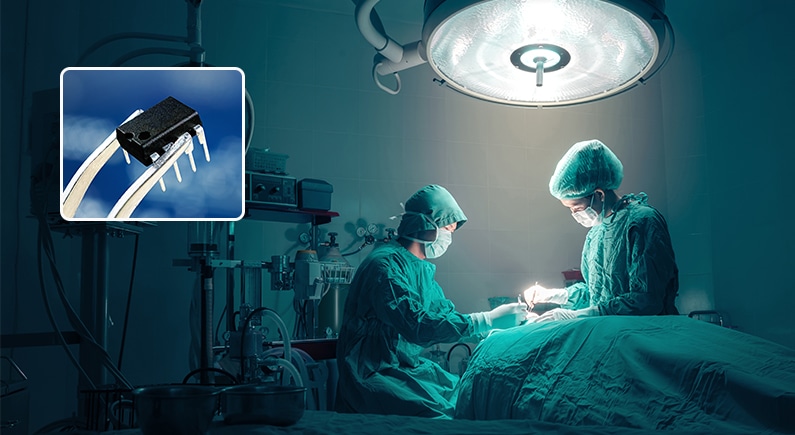
Michael Joe Cini
31st August 2022
Microrobotic Swarms in Non-invasive Surgery
“While science fiction writers may lead us to fear a future of Terminator-style robots, robotics discoveries have far greater potential to improve our lives. They could offer physical support and assistance, help with search and rescue efforts, and meet medical and other technological challenges” – Bill Gates, on his visit to Harvard’s Microrobotic Department
Surgically Barbaric: How Far We Have Come
There was a time in human history when the jobs of a surgeon and a barber were easily conflated. During the Middle Ages in Europe, physicians allegedly considered surgery to be beneath them, leaving the amputation of limbs and pulling of teeth – among other ‘unsavoury procedures’ – in the hands of so called ‘barber surgeons‘. A constellation of conditions, such as blood loss and infections, ensured that surgical mortality would remain at a constant high. To make matters worse, neither anaesthesia nor antibiotics were available at the time.
Fortunately, with the advent of modern medicine and the introduction of advanced technology, surgery could develop from a risky side-profession to a firmly established scientific discipline. As the razor and the cleaver were put down in favour of the disinfected scalpel, stronger medicines and anaesthetics helped patients deal with pain and infections. Novel technology like X-rays and computed tomography scans (CT scans) – while not completely free of their own risks – made operations and screening more effective and far less invasive. All of these improvements combined generally improved the surgical procedure, preoperative and postoperative care.
Technology has always been the crux upon which the revolutionary wheel turned. Nowhere is this more true than in Medicine. While both Virtual and Augmented Reality (VR, AR) are becoming more involved in the training of medical students and treating of PTSD, anxiety and chronic pain, other advancements are breaking ground in the surgical field. Highly promising is the confluence of surgery with robotics.
Lending a Metal Hand: Robotics in Surgery
In layman’s terms, robotics is an interdisciplinary field of study focused on the design, construction, operation, and use of robots. For professional purposes, the aim of robotics is to assist or replace humans in the workplace. Despite media often portraying robots as human-like beings, they can take any practical shape that is suited for the job, from metallic, arm-like utensils assisting engineers on the job, to self-driving vehicles driving cargo and supplies up and down colossal warehouses. As technology and individual components improve, the variance in design increases, and this includes enlarging or downsizing robots to unimaginable sizes. The prospect of downsizing robots is incredibly interesting, and ought to follow a similar development cycle to that of commonly used devices, namely the phone and the personal computer (PC).

Robots have been utilised in surgery for quite some time. They have become essential to the way patients are screened or operated on by their doctors. For instance, remote-controlled Surgical Assistants allow surgeons to perform minimally invasive procedures on their patients, usually from a separate workstation, which improves the general hygiene conditions of the operating theatre. In the meantime, some promising advancements in microrobotics can potentially amplify the accuracy of doctors and surgeons on a near-microscopic level.
Microrobotics is a specialised field of robotics focused on miniature robots, typically with characteristic dimensions smaller than a millimetre. They work using a microcontroller, a miniature, programmable computer chip which is capable of storing data and executing commands, much like a regular computer device. They have various applications in medicine, particularly when it comes to dealing with chronic diseases and the smaller-scale organs and tissue of the human body. Only recently, researchers from Essex’s School of Computer Science and Electronic Engineering discovered a non-invasive way of reactivating medical devices through magnets and swarms of microbots.
Shunting the Microrobotic Revolution
Microbots can be injected into the human body in swarms to unblock dysfunctional medical devices called shunts.
Shunts are commonly used to drain abnormal fluid discharged from organs. Overtime, they become dysfunctional due to an accumulation of calcium deposits, and require replacement. Replacing shunts requires invasive surgery, but swarms of microbots – each no larger than a human hair – can be used to clear out the blockages non-invasively, which in turn reactivates the shunts.

This novel, non-invasive intervention has been tried and tested for the first time by scientists from Essex’s School of Computer Science and Electronic Engineering. In a journal publication, microrobotics expert and lead scientist Dr Ali Hoshiar explained how, after the initial injection, the swarm can be directed towards the blockage with a powerful magnet to abrade the calcified sediment, removing it entirely. The researchers also found a direct link between the strength of the magnetic field, the speed of magnet movement, and the rate of abrasion by the microbots.
The foremost advantage of this new procedure is the non-invasiveness of the method, which eliminates the risk of infection carried by the alternate surgery and decreases recovery time. After the job is done, the miniscule robots can be magnetically guided to the stomach and passed naturally. They are also highly biocompatible, so they are not likely to cause toxicity.
This successful first step towards the surgical application of microbot swarms has paved the way for clinical trials. Furthermore, the researchers are also experimenting with other applications for their findings. This holds much promise for further developments within the medical sector towards less invasive procedures, for the general betterment of the patient’s experience as well as how we practice medicine overall.
TAKE PART IN MED-TECH WORLD 2022
It is now estimated that the global digital health market will increase to around $640 billion by 2026. Through our expertise coupled with optimized networking, we will ensure that both investors and startups are on the ground floor of this health revolution. The event which is organized and curated alongside a team of doctors, attracts legislators and policymakers, medical professionals, and investors from across the world, addresses the opportunities and challenges driving this million-dollar forum.






